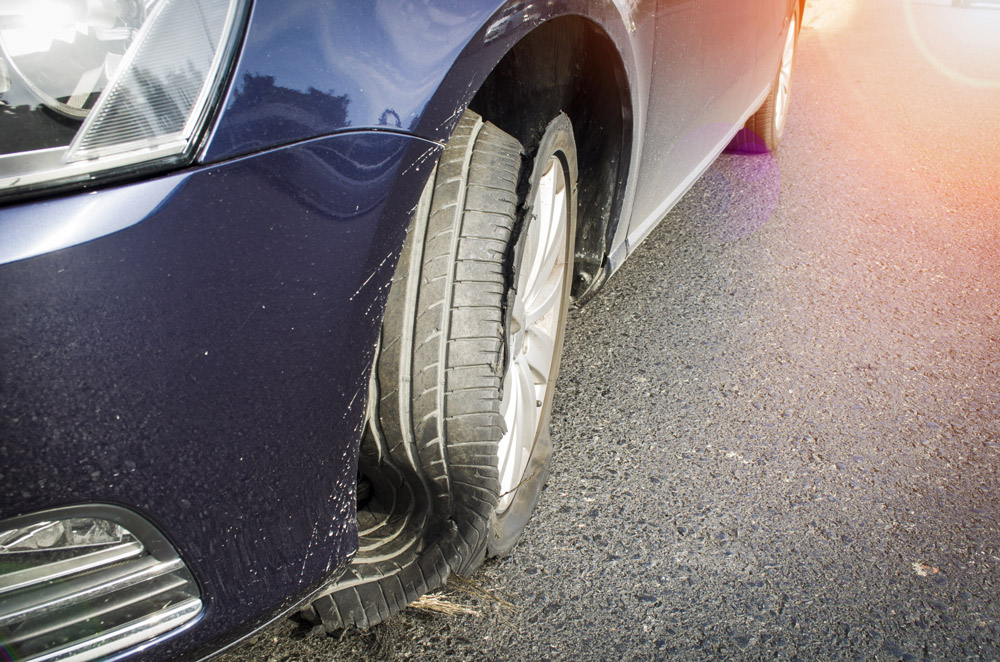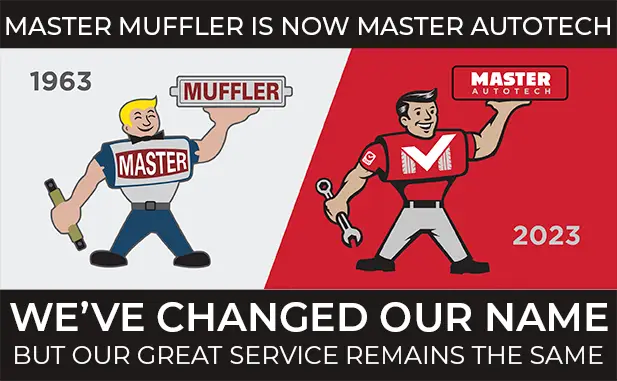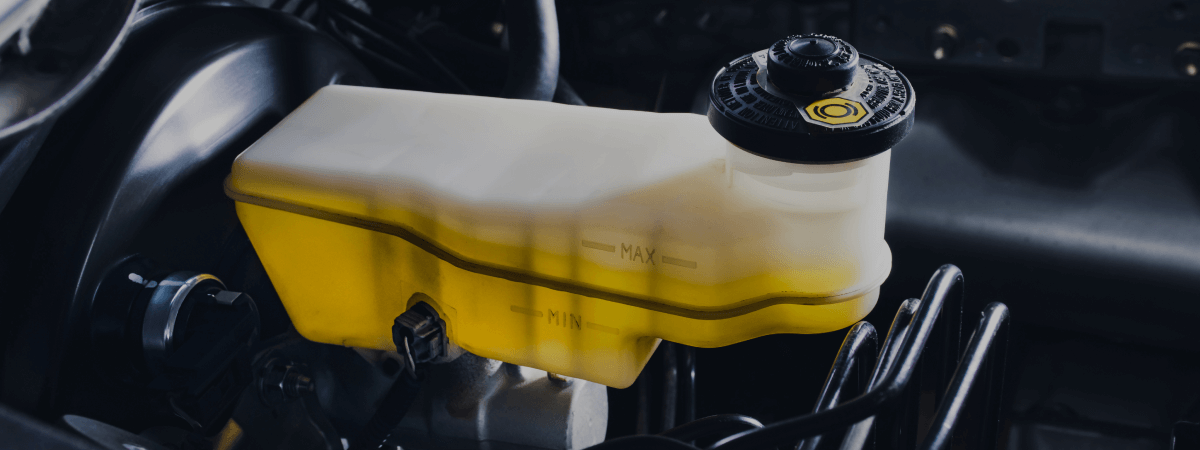
Horror Made Real
It’s the start of every good scary story: The driver and their passenger hear a sudden pop and the car lurches toward the side of the road. After slamming on the brakes and wrestling with the steering wheel, the driver muscles the car to a complete stop and gets out to check the damage (naturally, it’s raining). To their horror, both tires on the driver’s side are completely flat and now they’re stuck alone in a wooded area. Their eyes scan the length of the car until they rest on an object lodged inside the rear fender. It’s…a hook! (Cue the lightning).
Of course, the story of the Wet-Wooded Hook-Man is just a tall tale told by teens — a fantasy fabricated for frightening their friends around the fire. But there’s nothing so scary as the reality of a blown tire when you’re cruising down the road at the speed of traffic.
Let’s go over some potentially life-saving tips for situations such as these, straight from the friendly car technicians at Master Muffler’s Salt Lake City car repair center.
Keep Calm and Drive On
If there’s a golden rule when it comes to experiencing a frightening incident behind the wheel, it’s “Don’t Panic.” Unlike our horror-movie driver who manages a blown tire like wrestling an alligator, you want to remain as cool as you can. Too often, a panicked slamming of the brakes or a swerve of the wheel means endangering the drivers next to you, the passengers in your vehicle, and the potential damage to your property and others’.
We must prepare ourselves to think rationally in a crisis situation so that when that tire blowout does occur our first thoughts aren’t incorrect. This often means ignoring our knee-jerk, or instinctual, reaction.
The best thing to do when you hear that pop of your tires is to keep driving as straight as you can. This can be harder than it seems.
- If you feel your car drifting or turning fishtail, don’t turn the wheel hard to overcorrect.
- Accelerate gently out of the drift and try to keep your nose pointing straight down the road.
- Keep a firm hold of the steering wheel at the familiar 10 and 2 positions.
Remember, we want to avoid sending the car anywhere but straight ahead, so when that tire goes flat don’t treat it like a fire with stop, drop, and roll — just keep calm and drive on.
Avoid the Big Pedal
Pop quiz: what’s the best way to lock your brakes during an emergency and, counterintuitively, keep yourself from stopping? Answer: pressing on the brakes. While brakes are essential to the safe operation of any vehicle, flat tires play by different rules. No one wants brake problems to their car repair report on top of a bad tire, but when a flat tire loses grip with the road it can cause the car to plane instead of stop.
Instead, it’s important to let inertia slow the car down on its own. Thanks to Sir Isaac Newton, we know that objects in motion stay in motion unless acted upon by an external force. The wind, contours of the road, and the flat tire itself will all act as brakes to your vehicle without you having to exert any of your own pressure.
Is it ever safe to touch the brakes when a tire blows out? If your car has already begun to decelerate drastically and is traveling slower than 30 mph, you can lightly touch the brake pedal. Even then, however, you must avoid slamming it down.
Stopping Somewhere Safe
With the car slowing down and having avoided any uncontrollable maneuvers, you can begin slowly drifting your straight-driving vehicle to the right side of the road, towards the emergency lane. If your emergency lights aren’t already flashing, you should put them on now before you attempt to do anything with the steering wheel.
Once your car is stopped and you can make a phone call, you’ll want to have the tow truck take you to our Salt Lake City car repair shop, where we specialize in tire repair. By staying calm and letting physics do the rest, you can get yourself and the other drivers on the road out of a pickle with a blowout. Then our Master Muffler mechanics will do the rest.
Related Posts
When you think about car maintenance, you probably focus on oil changes, tire rotations, and maybe even brake pad replacement. But what about your brake fluid? If you’ve ever wondered, “What does brake fluid do?” or “Why is brake fluid important?”, you’re not alone. Brake fluid might not be the most talked-about part of [...]
Is that high-pitched squeal from your brakes driving you—and everyone else—crazy? Don’t ignore it. Squeaky brakes aren’t just annoying, they’re your car’s way of saying something needs attention. Whether you're cruising through Salt Lake City or winding up Idaho’s mountain passes, here’s what’s likely going on, how you can fix it, and when it [...]
Whether you’re cruising down I-15 toward Zion, exploring the scenic routes of Eastern Oregon, or heading north to catch the Tetons in Idaho, a smooth summer road trip starts with smart car maintenance. Before you pack the snacks and load up the playlist, it’s worth taking the time to make sure your vehicle is [...]





